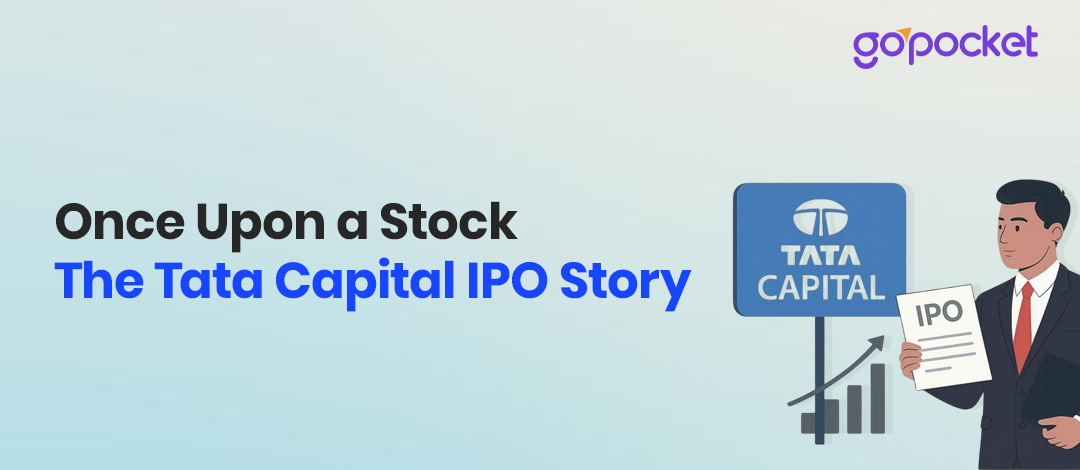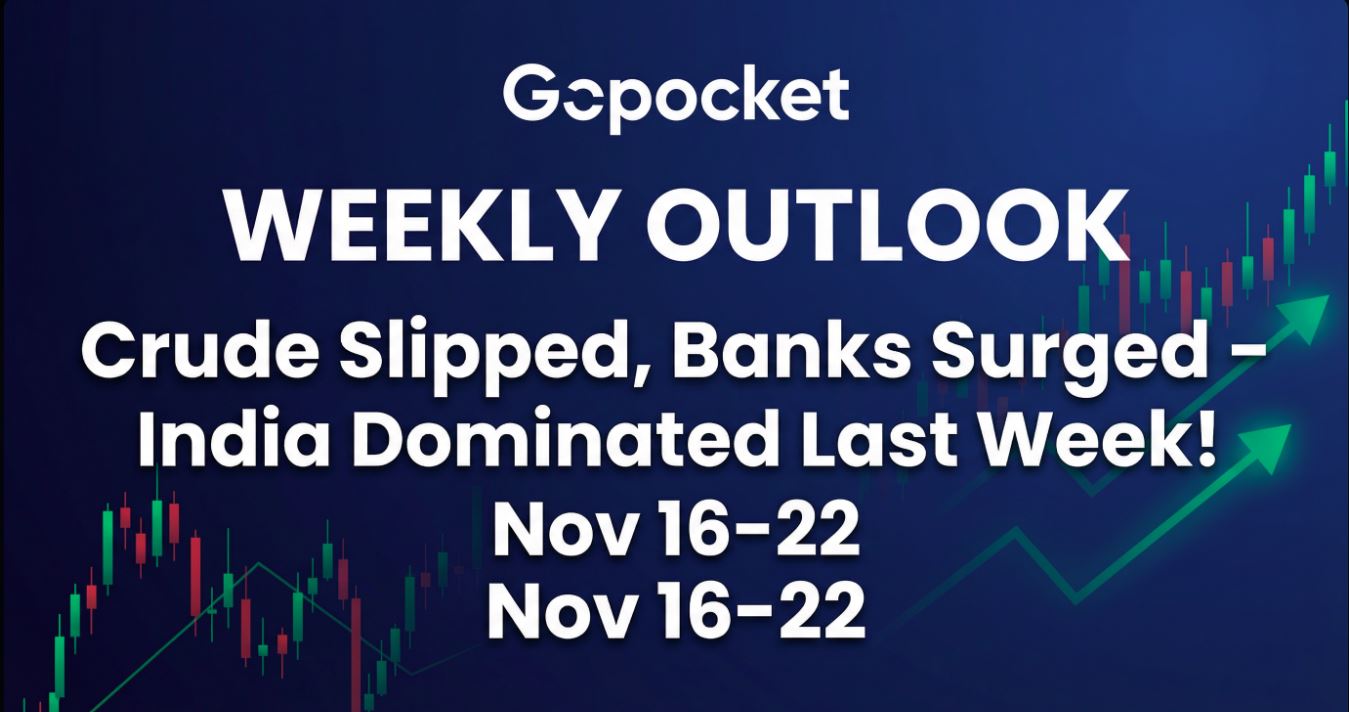
Imagine this: you’re scrolling through your phone, sipping your chai, when you stumble upon a headline that makes you pause – “Tata Capital IPO": "India’s Biggest Financial-Debut in 2025!”
Wait, Tata doing finance? That’s when the story begins.
In the world of corporate drama, many companies hope to have their “big debut” – an IPO. But when the mighty Tata Group steps into the spotlight, even seasoned market watchers lean in. Let me take you into this tale – whether you’re a shareholder, Tata fan, newbie trader, or someone who’s never even bought a share yet – this is for you.
You’ve read about IPOs in my previous blogs – how companies turn private dreams into public reality. But here’s one that’s gearing up to be a blockbuster: the Tata Capital IPO.
IPOs: WHAT’S ALL THE FUSS ABOUT?
An IPO (Initial Public Offering) is like a film’s premiere. Until now, the company sold tickets only to insiders (founders, early backers). With an IPO, doors open to you and me. The company raises capital, people get part ownership, and a public market for those shares is born.
Why do it? Growth ambitions, regulatory mandates (especially for financial firms), brand visibility, debt repayment – many reasons. But as with any red carpet event, there’s glamour and there’s risk.
ENTER: TATA CAPITAL – THE FINANCIAL POWERHOUSE
Let’s flip past the curtain and see who Tata Capital is, what it does, and why this IPO is making headlines.
WHO IS TATA CAPITAL?
• Founded: 2007, under the umbrella of Tata Sons.
• Parent / Ownership: Tata Sons holds a dominant stake (≈ 88.6 %).
• Nature: Non-Banking Financial Company (NBFC). It’s also stated as an “upper-layer NBFC” by the RBI, which must list itself publicly under regulations.
WHAT DOES TATA CAPITAL DO?
Imagine a one-stop money shop.
• Lending business: Personal loans, vehicle loans, loans against property, SME and corporate lending.
• Wealth & Investment services: Insurance distribution, credit cards, wealth management, sponsor & manage PE funds.
• Scale & reach: As of mid-2025, they have served some 7+ million customers and offer 25+ lending products.
So, Tata Capital isn’t just “another finance firm” – it's a financial engine covering retail, SME, corporate, plus the investing side.
TATA CAPITAL IPO: THE BIG REVEAL
Here’s a quick snapshot of the IPO details:

WHY DO COMPANIES FLOAT IPOS?
Pros / Advantages
• Fresh capital infusion: More funds for lending, expansion, meeting capital norms.
• Public stature & visibility: Being a listed Tata entity boosts brand trust.
• Liquidity for existing investors: Founders / early stakeholders can partially exit via OFS.
• Regulatory compliance: For upper-layer NBFCs, listing is mandatory.
• Fair valuation & share market access: Opens possibility for new investors to own part.
Cons / Risks
• Valuation pressure & market swings: Public market expectations are unforgiving.
• Disclosure obligations: You must open your books – less privacy.
• Lock-in risk: Shareholders / anchor buyers are subject to lock-in periods.
• Market sentiment sensitivity: Macro / interest rate / credit risk can impact share price.
• Underpricing / disappointment: If pricing is too aggressive or demand is tepid, listing could be flat or below expectations.
A few risk signals for Tata Capital IPO have been publicly noted – including steep discounting from unlisted value and sectoral risks.
Tata Capital Ltd. Financial Information (Restated Consolidated)

SOME EXTRA THOUGHTS
Grey Market Premium (GMP) as a Sentiment Indicator: Before IPO listings, shares sometimes trade unofficially in grey markets. GMP can be a useful theoretical gauge of demand and likely listing performance, though it’s not an official indicator.
Discount to Unlisted Price – A Pricing Debate: When IPO pricing is set significantly below a company’s unlisted value, it sparks a debate. It could be a deliberate move to ensure strong subscription, or it might indicate undervaluation risk that investors should carefully evaluate.
Comparative Peers and Sector Benchmarking: For any IPO – especially in financial sectors like NBFCs – investors often compare the company to established peers. Factors such as growth potential, credit quality, and valuation multiples are crucial in deciding attractiveness.
Lock‑in and Allocation Constraints: IPOs typically have rules around lock‑in periods for certain investors. This affects share availability and can influence post-listing stock behavior.
Retail Demand Dynamics: Public subscription levels are key in determining IPO success. Strong retail interest often drives better listing performance, but demand can be influenced by market conditions, sector sentiment, and company fundamentals.
READY TO GRAB A PIECE?
Yes, via GoPocket!
This blog isn’t just to tease curiosity – it’s action-oriented. You can apply for Tata Capital IPO directly via the GoPocket mobile app. They offer guidance, live updates, and a simple way to bid and track allotment.
Just fire up GoPocket, find the “IPOs” section, pick Tata Capital IPO, enter number of lots (minimum 1 lot = 46 shares), submit, and track your order. It’s as smooth as ordering dosa (almost!).
Don’t wait! If you believe in Tata’s legacy and the potential of this IPO – download GoPocket, log in, and apply during Oct 6–8. Let the dealing desk on GoPocket help you through steps, alerts, and allotment tracking.
"Investments in securities market are subject to market risks. Read all the related documents carefully before investing."
What's Trending
September 13, 2025
November 11, 2025
Recent Blog
Open Your Demat Account in Under 5 Minutes
Have any queries? Get support
Blog
Recent Blogs

Open your GoPocket Account within 5 minutes.
Have any queries?





.jpg)




.jpg)



